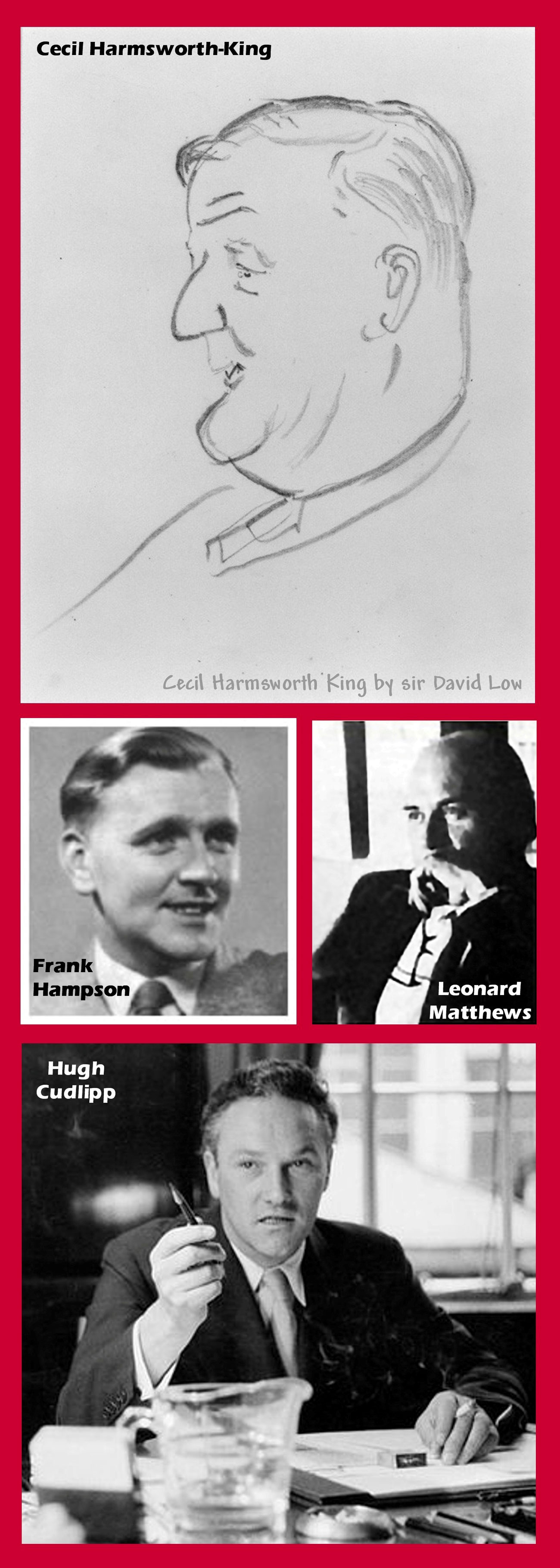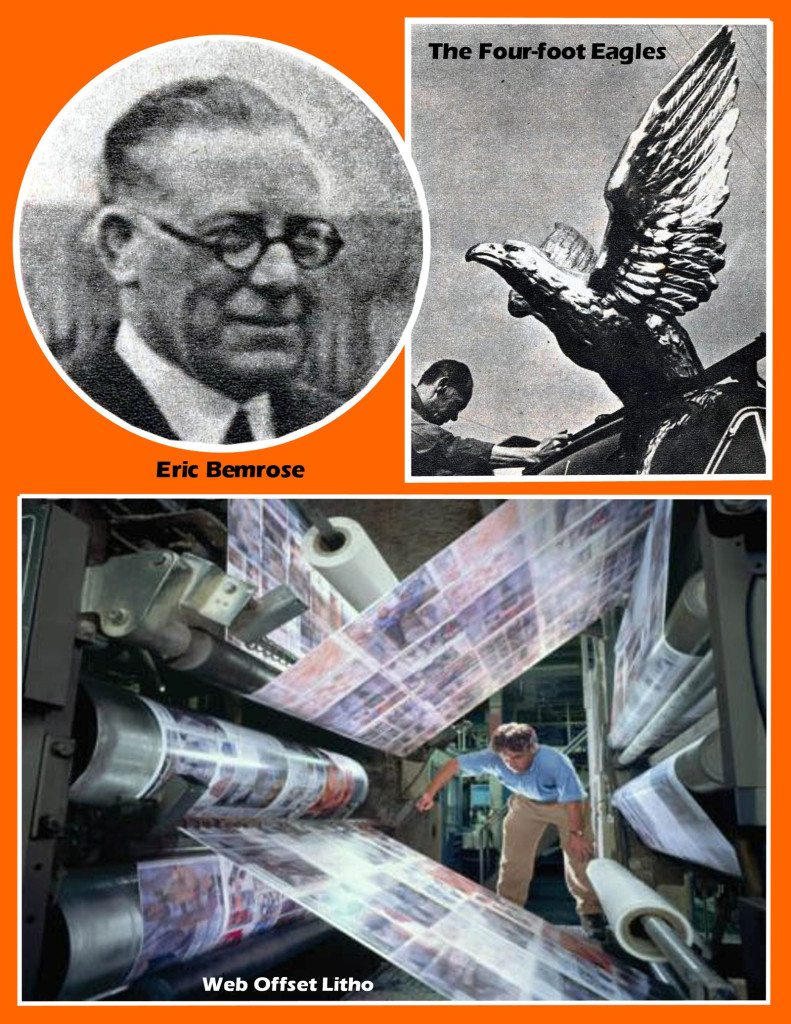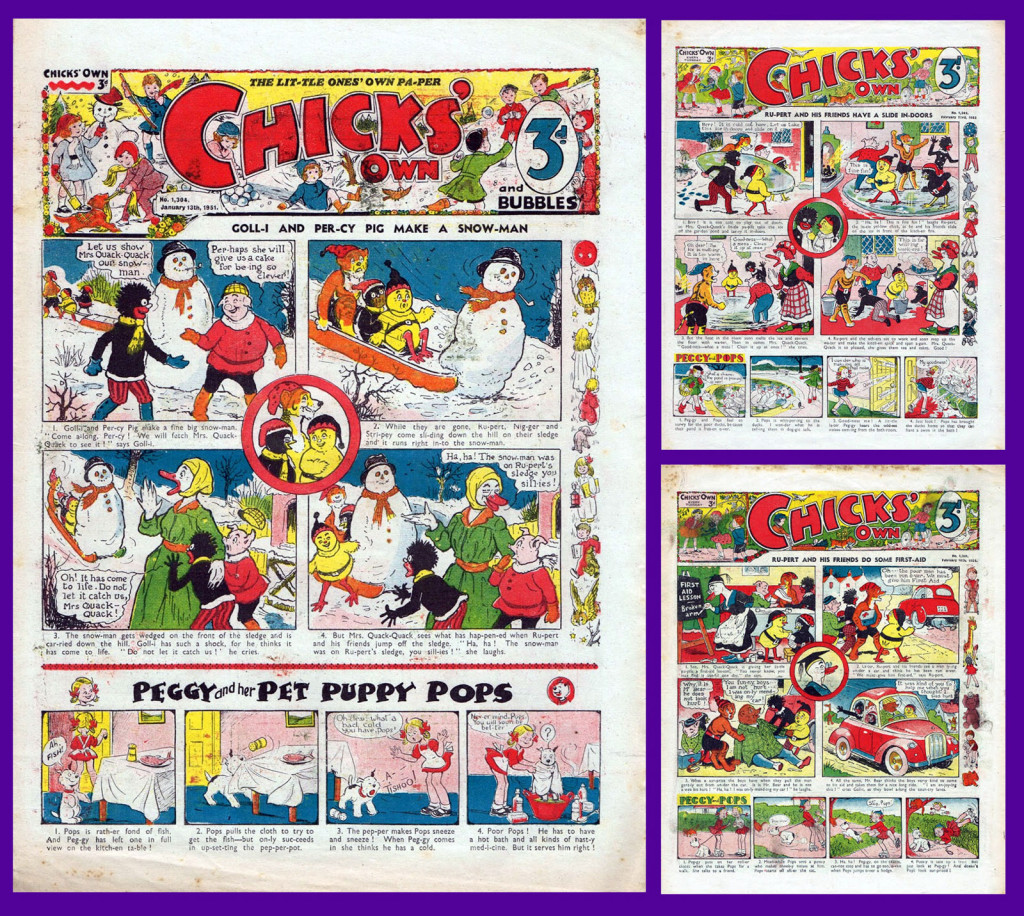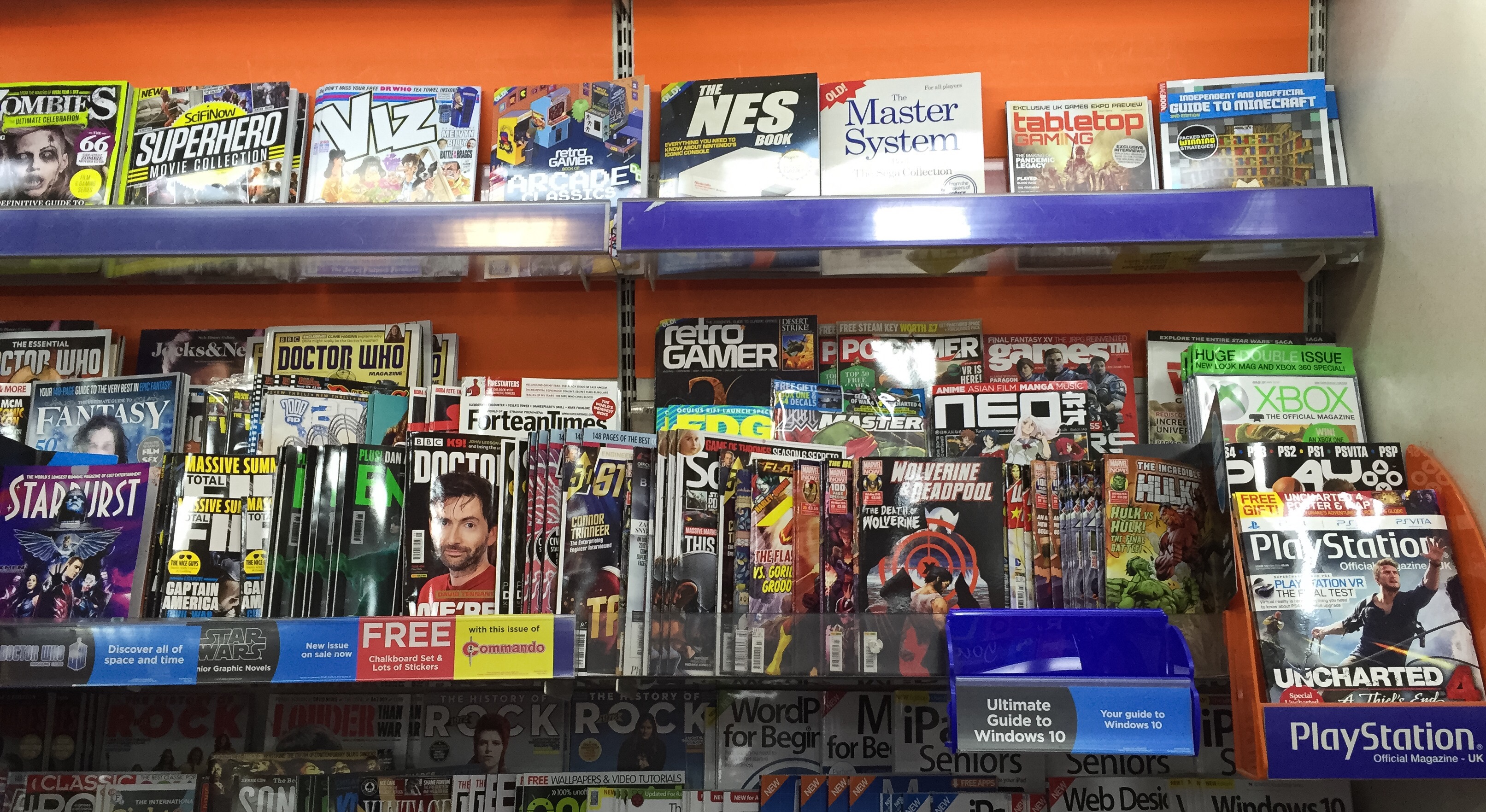Leonard Matthews, General Managing Editor of Fleetway and the Eagle Group of Comics, was a “Creative Visionary”… but that, Roger Perry argues in his extensive biography of the man which continues here on downthetubes, is only due to him having utilised the ideas of others.
Here, Roger charts the takeover of Hulton and the Eagle…
His Jealousy Almost Destroyed Eagle
1959
The failure of Top Spot must have been a great disappointment for Leonard Matthews, and on slamming open the door with the view to saying something to Brian Woodford and Edmund Burke, perhaps words momentarily (and under the circumstances, perhaps understandably) had failed him… for he did have rather a lot of other things pressing upon his mind at the time.
The ongoing thorn in Matthews’ side had been the long-running (and extraordinarily successful) rival title Eagle that, for the previous nine years had been realising around 800,000 copies each and every week – its editor having been, of course, the Reverend Marcus Morris. It’s possible that this thorn had been exacerbated even further by the galling knowledge that ten years earlier, this same Southport parson – bearing gifts in the form of the proposed Eagle dummy – had entered Old Fleetway House with the view to finding a publisher, but had all but been dismissed out of hand by Matthews’ then superior boss – Montague Haydon.
But for the dedicated Eagle reader (who had known nothing of this), perhaps there had been an up-side – perhaps it had been fortuitous that Haydon had done what he had, for if Associated Press had taken on the Reverend Marcus Morris’s ‘dream’, there would certainly have been no Merry-go-Round to double-up on the availability of paper needed in rationing days for the enormous print-run that it realised (for Merry-go-Round had belonged to Hulton Press and not to AP); there would have been no fleet of Humber Hawks cars with four-foot Golden Eagles mounted upon their rooftops during the days prior to the launch – cars that had toured the length and breadth of the country announcing to the world that Eagle is Coming! (for that idea had come from the Hulton Press publicity department); and there would have been no incitement for Eric Bemrose – the Liverpool-based printer – to have expanded his printing plant in order to include the new rotogravure printing press machinery.

Off-Set lithography operates on the principle that grease (ink) and water won’t mix. The image information being printed is placed on thin metal plates which during the printing process are continually dampened by water. The oil-based ink only adheres to the image (greasy) areas and the water dampens only the non-image (non-greasy) areas. The inked areas are then transferred onto a rubber cylinder (called a blanket) and then onto the paper as it passes around the blanket. The process is called offset since the image doesn’t go directly from the plates and onto the paper, but is offset or transferred to another surface that acts as the intermediary.
Under Monty Haydon (and the Associated Press), Eagle would have joined the masses and been printed in bog-standard letterpress (or web off-set litho) onto a lesser-quality paper and so there would have been none of the vibrancy that under the creative thinking of Sir Edward Hulton the magazine had so very much enjoyed. It is also doubtful whether Associated Press would have tolerated the idea of financing first the Bakehouse and then the Epsom-based studio as run by Frank Hampson – a studio that had included such brilliant artists as Bruce Cornwell, Don Harley, Eric Eden, Harold Johns, Keith Watson and Greta Tomlinson… to name but a few.

Some of the Dan Dare Team: Frank Hampson, Greta Tomlinson, Frank’s father, Robert, Harold Johns and Eric Eden
Brian Woodford has said earlier that Matthews became Managing Editor of Amalgamated Press’s comics, including the girls’ and nursery titles as well as all the boys’ titles. Try to imagine what would have happened had Matthews pushed aside Marcus Morris and had taken over Eagle as far back as 1957. Goodness – it doesn’t even bear thinking about.
It’s possible that Matthews’ personal thorn was also being felt by the autocratic Mirror Group boss Cecil Harmsworth-King. As 1958 had inched its way into 1959, greater interest was being homed in on Eagle’s artistic creator (as opposed to the magazine itself) – a creative genius upon whose shoulders the whole operation had existed. He was, of course, the outstanding visionary Frank Hampson.

The Eagle may have been both a commercial and creative success for its team, but the work to produce Dan Dare had exhausted the strip’s co-creator, Frank Hampson.
With the Daily Mirror Group now owning the Amalgamated Press-cum-Fleetway Publications (thus also ‘owning; Leonard Matthews), in January of that year (1959), King (or, perhaps, Hugh Cudlipp – one of the appointee directors of the Daily Mirror), had given Matthews strict instructions that at whatever the cost, he was to poach Hampson away from Hulton Press. The thinking behind this was that Eagle would be bereft of its most prestigious contributor (for there was no doubt that he was behind the paper’s key selling factor – Dan Dare, Pilot of the Future) and with him out of the way, the paper would be deprived of its original creative force.
There was, of course, another side to this slightly bent and wonky coin – it’s likely that the Matthews / King / Cudlipp triumvirate hadn’t been at all aware of Hampson’s current medical state – a condition whereby he had become eccentric and unstable, caused by his own manic obsession in striving to get both his own work (and that of the studio he ran) as perfect as humanly possible.
The devious negotiations – running between late-January and through to 3rd February – reached a stage whereby Matthews had been authorized to offer Hampson a three-year contract worth £22,500 (this being an annual wage of £7,500… a little more than double the salary that Hulton Press were paying him.
The prospect of virtually doubling his salary overnight must have been tempting, but Frank’s loyalty wasn’t to be compromised, and he took managing editor Marcus Morris into his confidence.
The underlying problem was that Hampson was physically and mentally exhausted from ten years of producing Eagle’s main feature and clearly he needed a change of some kind. Realising the effect his loss would have on the Hulton children’s titles, Marcus agreed that – in return for his rejecting the Amalgamated Press-cum-Fleetway Publications offer – Hampson should be allowed to relinquish control of “Dan Dare”; be given three months’ paid leave for a holiday in Jerusalem and to the Dead Sea area, and that in the imminent future, he would draw just one single page of a completely new weekly religious strip.
Marcus Morris wrote to Hampson on the 12th March 1959 confirming all that had been outlined promising that a proper letter of agreement would ‘follow shortly’. But before that could happen, on the 14th March (this being just two days later) Odhams Press had acquired all the major share holdings in Hulton Press. These unfolding events ended with Hampson declining the Mirror Group’s offer therefore scuppering Matthews’ plan to launch a brand new boys’ paper – Bulldog – one in which Hampson would have featured prominently.
Adding to all the other problems Matthews had found on his plate, the National Union of Printers brought about a great deal of disruption during the months of May and June of that year with their six-week-long strike. The outcome of this had been that a large number of magazines that had already been struggling to survive anyway had little option but to be forced to go to the wall and close.
In a way, this six-week long strike by the printing unions had come about at a most convenient moment, for it allowed time for Frank Hampson to relinquish his hold on Dan Dare and hand the reins over to Frank Bellamy. It had all sounded simple enough… but then, several other spanners were inadvertently being thrown into the smelting pot. The first of these had been the sudden death of Alan Stranks on 18th June, while the writer was holidaying in Spain.
Stranks had been the original creator of PC 49 – the character having first appeared on BBC radio during the late 1940s – and, naturally, he had been the key writer for the series when it had appeared in Eagle. However, alongside Frank Hampson, Stranks had also co-written many of the “Dan Dare” stories. With his sudden demise and the prospect of Hampson disappearing off to the Middle East for several months, this effectively had left both Don Harley and Frank Bellamy with nothing to draw.
The second spanner had been the equally sudden antics of Edward Hulton… although to those in upper management, it was probably by now, very much on the cards anyway.
Already burdened with huge losses through the decline in fortunes for Lilliput and Picture Post, Lord Edward Hulton – the owner of Hulton Press – had finally decided that enough was enough and had sold the whole blooming lot to Odhams Press… effectively undermining Marcus Morris’s promises to Frank Hampson. However, with the printing strike settled by late June, Hampson was finally able to make preliminary arrangements for his planned visit to Palestine during July so that he might research the proposed back-page feature. ‘The Road of Courage’ was formally commissioned in August 1959 (at around the same time that Marcus Morris had decided to relinquish his own position as the General Managing Editor of Eagle et al and take up a new editorial position with the National Magazine Company).
I am now going to fast-forward some 18 months to March 1961, but that doesn’t mean to say that little had happened in between-time. It’s just that I want you all to grasp the feeling of unsettled working conditions that were being experienced by all at Juvenile Publications before bringing in the next stage of Matthews’ undermining conditions.
1961
On 22 March, after increasingly hostile negotiations (including questions having been asked in Parliament), it was announced that 90 per cent of Odhams Press shareholders had accepted the Mirror Group offer for the company. But not only had Odhams and Hulton / Longacre Press effectively been gobbled up by the Mirror Group conglomerate but so too had Newnes and several other lesser-known companies, all of whom had suddenly become known as IPC – the International Publishing Corporation.
This latest takeover destroyed what had been Hulton Press. From having been a small friendly, exciting, go-ahead company with twelve publications, including Farmers’ Weekly, Kiné Weekly and Melody Maker, what was once Hulton Press had become an insignificant part of an empire that produced over 200 magazines, newspapers and juvenile publications. Eagle, Girl, Swift and Robin were now all lumped together in the Mirror / Fleetway broiling pot… along with such comics as Jack and Jill, Comet and Lion.
For the likes of Girl‘s Chief Sub-Editor Shirley Dean, who was also working on Robin, you went to Chick’s Own, found a story dating to a 1936 back-issue and up-dated it.
Leonard Matthews – already in charge of the Mirror’s Fleetway children’s comics – said in an interview with Sally Morris and Jan Hallwood who were researching for their book Living with Eagles that Cecil King had asked him what he was intending to do with Hulton Press and the Eagle group. Matthews replied that he was in charge of Fleetway juveniles and had nothing to do with Hulton Press.
“Oh yes you do,” said Cecil, “last Friday you were elected a member of Hulton’s’ board.”
“Nobody told me,” replied Matthews.
“I’m awfully sorry,” said King, “but that’s the way things are done here.”
My grateful thanks go to David Slinn for not only sharing his vast knowledge in regard to the events that took place on either side of the 1959 fiasco but also for offering so many other juicy snippets that are seen scattered throughout this series.
In Part Four, I’ll speak of Matthew’s integrated spy that resulted in the ousting of a professionally qualified child psychologist.
Roger Perry
The Philippines
[divider]
More Eagle Daze…
Eagle Daze: The Life and Times of Leonard James Matthews
• Eagle Daze: The Life and Times of Leonard James Matthews – Part One
Roger explores the beginnings of the destruction of the Eagle…
• Eagle Daze: The Life and Times of Leonard James Matthews – Part Two
The comic magazine Top Spot, published in 1958, was Matthews’ brainchild – but it was the male counterpart of an already existing magazine and it was a title that faced plenty of problems as it ran its course before merging with Film Fun after just 58 issues…
• Eagle Daze: The Life and Times of Leonard James Matthews – Part Three
Roger outlines how Matthews jealousy almost destroyed the Eagle…
• Eagle Daze: The Life and Times of Leonard James Matthews – Part Four
Roger reveals a possible mole working on the Eagle and trouble behind the scenes on Girl…
• Eagle Daze: The Life and Times of Leonard James Matthews – Part Five
How a Marks & Spencer Floor Detective Became Managing Editor of Eagle…
• Eagle Daze: The Life and Times of Leonard James Matthews – Part Six
Roger reveals how Dan Dare co-creator Frank Hampson was thorn in Leonard Matthews side…
• Eagle Daze: The Life and Times of Leonard James Matthews – Part Seven
Trouble at the top for ‘The Management”, the troubled debut of Boys’ World – and the demise of Ranger
• Eagle Daze: The Life and Times of Leonard James Matthews – Part Eight
On the creation of Martspress, the company that would publish TV21 in its later, cheaper incarnation…
• Eagle Daze: The Life and Times of Leonard James Matthews – Part Nine
Moving from the sublime to the ridiculous, Roger recalls how Men Only was given a new lease of life – and Leonard Matthews’ ignorance of Star Wars…
• Eagle Daze: The Life and Times of Leonard James Matthews – Part Ten
A phone-call out of the blue brings about a closer relationship with the one man Roger had once feared the most…
• Eagle Daze: The Life and Times of Leonard James Matthews – Part Eleven
A search for elusive promotional film stills end in the middle of nowhere in a one horse town without a horse – and Eagle‘s production methods are recalled
• Eagle Daze: The Life and Times of Leonard James Matthews – Part Twelve
Roger clarifies points made in past chapters, looks back on Leonard Matthews career – and sums up his contribution to British comics – and publishing in general…
[divider]
This article, which is being published in a total of twelve parts, has been put together using material from Leonard Matthews’ obituary as written by George Beal for the Independent newspaper dated Friday, 5th December 1997; also taken from the Independent newspaper dated Sunday, 23rd October 2011 is a piece authored by Jack Adrian (a.k.a. Christopher Lowder); Living with Eagles compiled and written by Sally Morris and Jan Hallwood (particularly pages 219 to 222); David Slinn’s research notes during 2005 in connection with the authoring of Alastair Crompton’s Tomorrow Revisited and from Brian Woodford’s association with Matthews at the Amalgamated Press between 1955 and 1962.
Entries also come from both Wikipedia and from the internet under the heading Fleetway Publications. Further pieces have been taken from Eagle Times as and where identified; the blog-spots of Michael Moorcock’s Miscellany (particularly 9th and 10th April 2013) and Lew Stringer’s Blimey! where he refers to the Top Spot magazine. The remainder is from my own personal association with Leonard Matthews between the years of 1978 and 1991.
[divider]
• You can read Roger Perry’s full biography here on Bear Alley
Artist, designer, photographer and writer Roger Prölss Perry was the youngest of three children – the given name of Prölss deriving from the maiden name of his paternal German grandmother.
Born in Guildford, Surrey in July 1938, after school he studied at the Regent Street Polytechnic School of Art close to Oxford Circus, the West End and the BBC where he achieved the National Diploma in Arts and Design before commencing with a further year of study in commercial design under the guidance of Ley Kenyon DFC, noted for his writing, art and underwater photography, and lithographer Henry Houghton Trivick (1908-1982).
His first job in the media industry was as an in-house illustrator on Farmers’ Weekly, beginning in March 1959, working under the direction of Art Editor Alfred Harwood, working on the seventh floor of Hulton House at 161-167 Fleet Street, London. He was there for just five months before going into two years of National Service until August 1961, returning to the company (now Long Acre Press) as a layout artist (designer) at “Juvenile Publications”, the umbrella name for Eagle, Girl, Swift and Robin. He joined the team of three other layout artists – Bruce Smith, Ron Morley and John Kingsford – on Monday, 28th August 1961 where he remained until May 1966.
He then began work as Art Editor at Century 21 Publishing until June 1969. As he says: “Yes, I suppose I could be described as a ‘layout artist’ but I commissioned art (Art Editor), kept an eye on Andrew Harrison and Bob Reed (Studio Manager), took photographs as and when needed (Resident Photographer) and generally made sure that everything was present and correct when everything needed was being sent to the printer (Office Boy). I also (with the help of Linda Wheway) came up with the ideas and photographs for five books (Author?)”.
From Century 21 Publishing, Perry then went to Hamlyn Books (July 1969 to October 1970); and worked for Bob Prior’s premium packages for two months before joining ex-Art Editor of Century 21 Publishing Dennis Hooper in December 1970 who was now Editor of Countdown at Polystyle Publications.
Perry remained with Polystyle until September 1974, when he became Art Editor for Purnell Books, remaining with the publisher for eleven years – until 1985 when he started operating his own public relations business.
Due to his growing interest in the art and the close proximity of Bath where the nerve centre of the Royal Photographic Society is, he achieved the distinction of Associate Member in 1987 for audio/ visual presentations thus entitling him to display the letters ARPS after his name… although he rarely does.
Having had a life-long fascination for the Far East, he moved to the Philippines in the 1990s, where he married Marilyn Gesmundo. He lived for 11 years on Cataduanes before moving a number of times recently following Typhoon Haiyan, finally with Raquelyn Navarro in the city of Naga in Cebu.
Sadly, Roger died on 23rd July 2016 following a heart attack, just one day after his 78th birthday.
He is survived by his daughter, Rae. His son, Marcus, predeceased him after a long battle with cancer.
Categories: British Comics, Creating Comics, Featured News, Features






 Rebellion announces new Battle Action mini series – our guide to the returning strips
Rebellion announces new Battle Action mini series – our guide to the returning strips  Comic Creator Spotlight: The Art of Gordon Livingstone
Comic Creator Spotlight: The Art of Gordon Livingstone  The Rotten State of Newsagents – Is it any Wonder Publishers Are Pushing Digital?
The Rotten State of Newsagents – Is it any Wonder Publishers Are Pushing Digital?